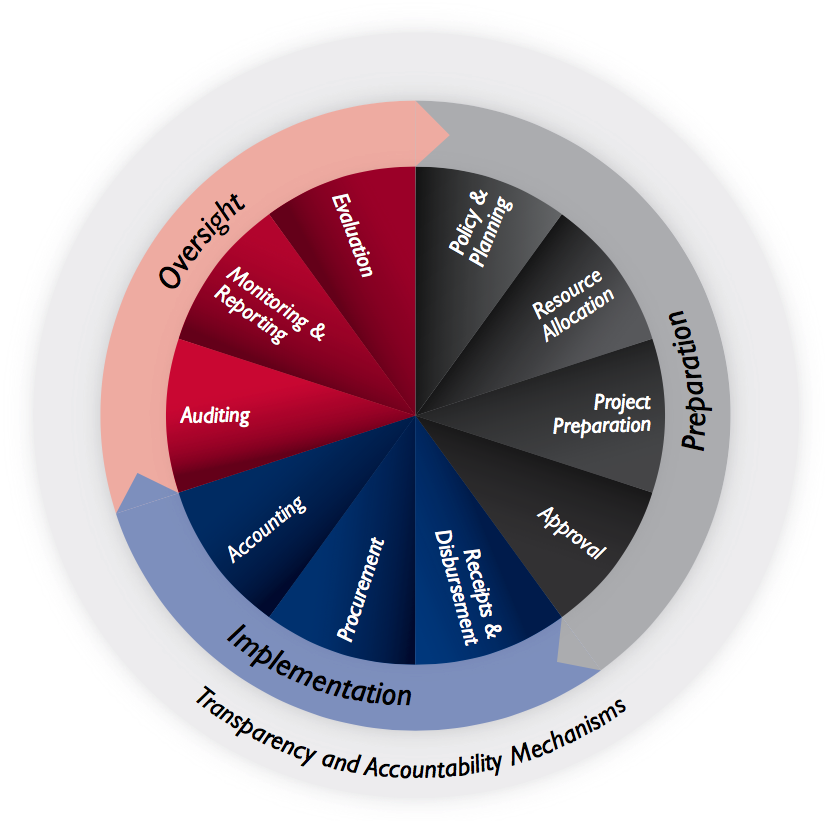Defining Country Systems for Climate Change Adaptation Finance

Introduction
In recent years, the global community has come together to provide increasing levels of international finance to help developing nations adapt to the challenges presented by the threat of climate change. A number of funds to support adaptation initiatives in developing countries have been established. However, the mere availability of international funds isn’t enough for adaptation projects to translate into sustainable, climate-resilient development now and in the future. To make best use of the nance available, countries need to have the institutional capacity to prioritize their needs, access the funding and efficiently implement related projects.
Strong country systems for managing public finance are widely considered to be critical to effective governance. The quality of these systems has a direct relationship to the ability of governments to successfully deliver services, including those related to climate change adaptation.
However, a clear definition of the term “country systems” is an essential precursor to the discussion on ways to strengthen them. The context in which it is used has largely informed the way the term is understood. Nevertheless, understandings can and often do differ, thereby leading to confusion, miscommunication and the need to establish a common, practical definition.
This paper, which is based on the experience of the USAID Adapt Asia-Pacific Project, presents one such practical definition to the term “country systems”. It then elaborates on the functionality of each of the eleven components of country systems (see below and Figure 1 above), drawing connections to climate change adaptation and related financing.
This is the first publication in the USAID Adapt Asia-Pacific Adaptation Finance Knowledge Series. For related resources see the Further Resources section below.
Country Systems Components
A good understanding of the budget cycle is essential to the understanding of country systems. The three basic phases of the budget cycle are as follows:
Preparation – the phase in which the strategic direction and national goals are determined and resource allocation priorities are established for the implementation of associated policies and projects.
- Typical components: Policy and Planning, Resource Allocation, Project Preparation, Approval.
Implementation – the phase in which funds are expended and policies and projects are executed to achieve government goals.
- Typical components: Receipts and Disbursement, Procurement, Accounting.
Oversight – the phase in which spending on policies and projects is reviewed and accounted for and progress towards achieving goals is evaluated.
- Typical components: Auditing, Monitoring and Reporting, Evaluation.
Figure 2 on pages 6-7 of the paper provides a summary snapshot of these systems, identifying some of the common tangible elements within the systems and how adaptation plays out within them.
Strengthening Country Systems: Key Messages
Good public financial management is a necessary ingredient for a strong country response to the impacts of climate change over the medium- to long-term.
That response will require that governments adopt a development approach that favors climate change adaptation, drawing upon an array of international, domestic and private sector financing sources and investing in climate-smart infrastructure, social services and sector strategies. For this response to be undertaken efficiently and transparently, countries need strong systems that help governments use available resources effectively.
Strengthening country systems will help countries access international financing for adaptation. Access to adaptation funds will in turn ensure investments in building adaptive capacity, including institutional capacity, thereby further strengthening country systems. It is a mutually reinforcing process.
To go about practically strengthening their systems for adaptation finance, it helps for countries to have a grounded and realistic understanding of how those systems are composed. This paper presents one such definition. It is presented to assist countries in understanding and identifying which parts of their own systems need strengthening.
Funded through USAID’s Regional Development Mission for Asia (USAID/RDMA) and implemented by AECOM, USAID Adapt Asia-Pacific was designed to share information and best practices about climate change adaptation finance modalities and project preparation tools and help governments build capacity to access the existing pool of international climate change adaptation funds.
Go to the USAID Climate Change Adaptation Project Preparation Facility for Asia and the Pacific (USAID Adapt Asia-Pacific) project page
Suggested Citation
USAID Adapt Asia-Pacific (2015) Defining Country Systems for CCA Finance. USAID Regional Development Mission for Asia: Bangkok, Thailand.
The Adaptation Finance Knowledge Series
USAID Adapt Asia-Pacific has been helping countries develop bankable adaptation projects and improve their access to funding. These experiences, published in this series, are based on our work with governments, multilateral and regional organizations, and other experts.
- Guidelines for Designing Bankable Adaptation Projects (2016)
- 6 Things to Know about Urban Adaptation (2016)
- Analyzing the Economic Costs and Benefits of CCA Options (2016)
- Shortlisting Climate Change Adaptation Projects (2015)
- Quick Guide to Climate Change Adaptation Funds (2015)
- Defining Country Systems for CCA Finance (2015)
- The Exchange Series on Climate Financing (2013-2015)
- USAID Adapt Asia-Pacific Annual Meeting Proceedings (2012-2015)
(0) Comments
There is no content